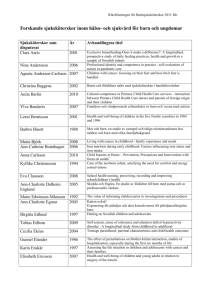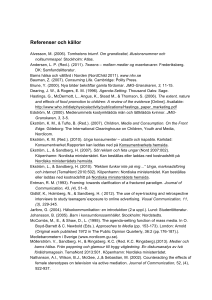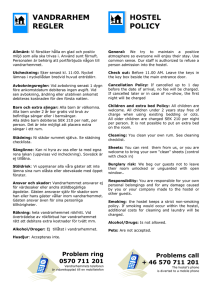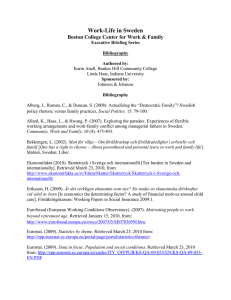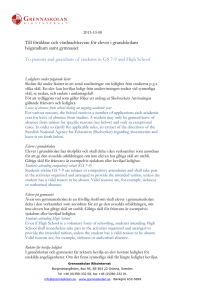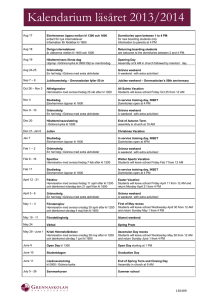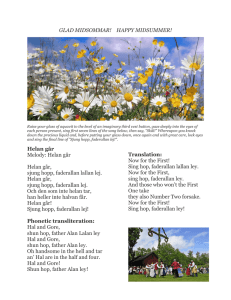Impact of fathers` taking leave on children`s lives in Nordic countries
advertisement
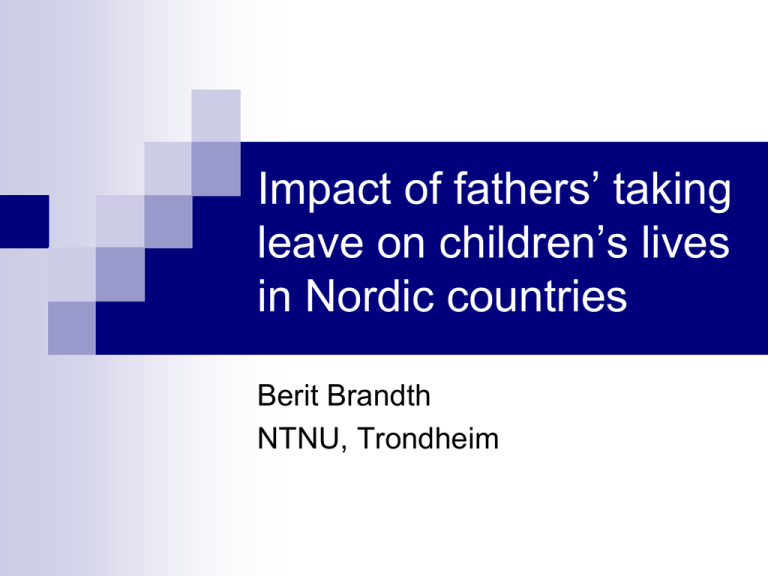
Impact of fathers’ taking leave on children’s lives in Nordic countries Berit Brandth NTNU, Trondheim Ch. 3 Inventory of family policy research in the Nordic countries on what is best for children Parental leave objectives Gender equality! (primary objective) Father-child relationship (secondary objective) Children’ best?? (implicit objective?) Methodological issues (O’Brian 2009) What can be measured? Parental leave is a complex of many diverse arrangements Parental leave is part of a matrix of public investments in children Indirect measures Gender equality – gender equal families are beneficial to children Violence – less violence in families where fathers have taken parental leave (Ø.G.Holter) Divorce – less divorce in where fathers have taken parental leave Long term effects on father involvement Fathers who take the father’s quota spend more time with children (after the quota) than fathers who didn’t take it (Solli & Rege 2010) The longer the leave, the fewer hours they work when the child is older compared with fathers who only go on a short leave (Duvander & Jans 2009) Fathers who took more days were more likely to take solo responsibility for children when mothers worked, spend more time with children on a workday and be engaged in specific childcare tasks (Haas & Hwang 2008) Long term cognitive effects Children with fathers taking the father’s quota had better school results 16 years later The effect of father’s education has increased after the father’s quota The father’s quota has improved children’s chances in life Cools, Fiva & Kirkebøen (2011) Child well-being today and tomorrow Tomorrow: ’wellbecoming’ - accumulation of human capital and social skills for tomorrow. Social investment Today: well-being in the here-and-now Effects on children’s well being in the here-and-now Little empirical research on the content of parental leave - what parents do on parental leave Effects of fathers being ”home alone” 1. 2. Childrens needs define fathers’ practices Fathers develop care competence (Brandth and Kvande 2003) With the mother at home during the father’s leave 1. 2. He becomes a supporting player He takes care of the older siblings (Brandth and Kvande 2003) Conclusion It is time to call for more research on the impact of fathers taking leave on the lives of Nordic children What research is there from other countries? References Brandth, B. and I. V. Gislason (2011): Family policies and the best interest of children. In Gislason, I.V. and G.B. Eydal (eds):Parental leave, childcare and gender equality in the Nordic Countries. TemaNord 2011:562. Copenhagen: Nordic Council of Ministers Brandth, B. and E. Kvande (2003): Father presence in child care. In Jensen, A.M. and L. McKee (eds.), Children and the Changing Family. London: Routledge Falmer Cools, S., J.H.Fiva and L.J. Kirkebøen (2011): Causal effects of paternity leave on children and parents. Discussion Papers No. 657, Statistics Norway http://www.ssb.no/publikasjoner/pdf/dp657.pdf Duvander, A-S. and A.C. Jans (2009): Hur länge spälar pappors föräldraledighet roll? En studie av sambandet mellan pappors föräldraledighet och deras kontakt medd sina barn. Socialförsäkringsrapport. Stockholm: Försäkringskassan Haas, L. and P. Hwang (2008): The impact of fathers taking parental leave on fathers’ participation in childcare and ties with children: Lessons from Sweden. Community, Work and Family, 11:85-104 Holter, Øystein Gullvåg (2008): with: Svare, H. & Egeland, C.: Likestilling og livskvalitet 2007. AFIrapport 2008:1. Oslo: Arbeidsforskningsinstituttet O’Brien, M. (2009): Fathers, Parental Leave Policies and Infant Quality of Life: International Perspectives and Policy Impact. Annals of the American Academy of Political and Social Science, 624:190-213 Solli, M. and I.F. Rege (2010): The impact of Paternity Leave on Long-term Father Involvement. CESifo Working Paper No.3130 http://papers.ssrn.com/sol3/papers.cfm?abstract_id=1649344
